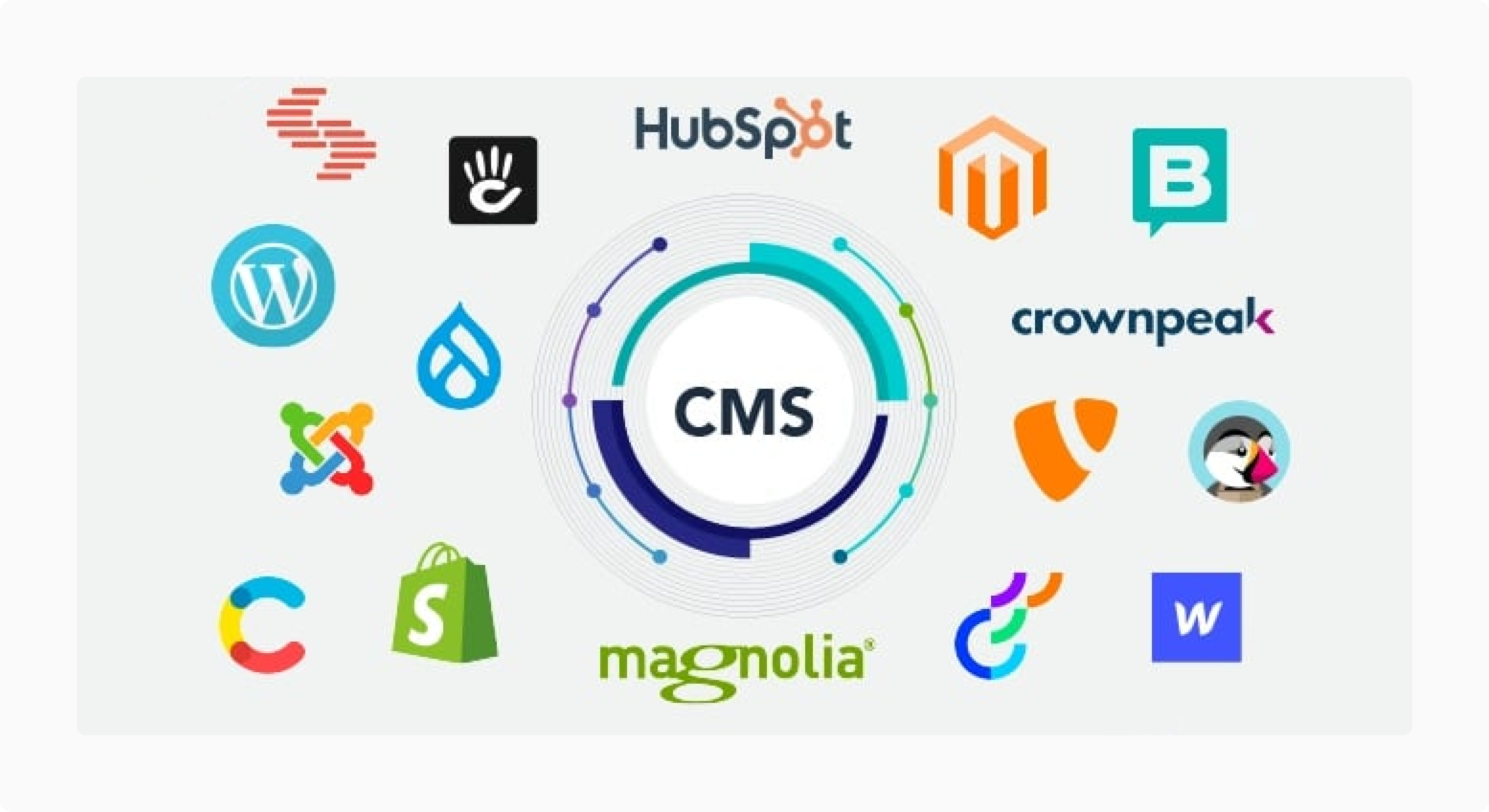Creating a Forex Broker Website That Attracts Traders

 By Otar Topuria
By Otar TopuriaOtar is a seasoned content writer with over five years of experience in the finance and technology niche. The best advice he received was to read, which has led him to an academic background in journalism and, ultimately, to content writing. He believes everything can be brought to life through words, from the simplest idea to the most complex innovation.
 By Tamta Suladze
By Tamta SuladzeTamta is a content writer based in Georgia with five years of experience covering global financial and crypto markets for news outlets, blockchain companies, and crypto businesses. With a background in higher education and a personal interest in crypto investing, she specializes in breaking down complex concepts into easy-to-understand information for new crypto investors. Tamta's writing is both professional and relatable, ensuring her readers gain valuable insight and knowledge.

We subconsciously know that well-designed websites attract us and keep us returning. Based on their impression, it takes about 0.05 seconds for customers to decide whether they enjoy your website and whether to stay or quit.
The increase in online Forex trading is substantial and is no exception when it comes to design. One of the biggest financial markets in the world, the Forex market presents traders with an array of opportunities. A Forex broker site must be well-designed, easy to use, and safe to attract and keep traders.
A Forex broker website design must satisfy traders' demands by offering reliable security, transparent services, and effective transactions. This article instructs readers on how to design a user-friendly Forex broker website. We will review the procedures and best practices for creating a valuable and eye-catching website for a Forex broker.
For a Forex broker website to succeed, user-friendliness, security, and transparency should be prioritised.
By providing cutting-edge tools and automation capabilities, reputable Forex trading platforms like MT4, MT5, and cTrader can be integrated to improve the trading experience.
Proactively promoting through social media and SEO, keeping an eye on the competition, and launching with a comprehensive checklist are all essential for generating initial traffic and maintaining a competitive edge.

Every website built starts with thoroughly understanding the possibilities and market research, especially regarding niche FX trading. You need to take a closer look at some of the best Forex broker websites, identify the points that stand out and give them the unique look and feel of your own Forex brokerage company. Let’s examine some of the essential steps while planning.
Determine the psychographic and demographic traits of your prospective customer base. Recognise your target audience's demands, preferences, and trading habits. This will enable you to customise the services on your Forex broker website to better match their needs.
It is crucial to choose a domain name that accurately describes your products and services. The domain name must be straightforward, spell-checkable, and associated with Forex trading platforms. This makes it simpler for customers to find your website and aids in building a robust online presence.
Selecting a trustworthy hosting company is essential for the functionality and security of your website. Uptime assurance, speed, customer service, and security features are important considerations. To determine which hosting company best suits your demands and the design of your Forex broker website, compare well-known names like Bluehost, HostGator, and SiteGround.
Establishing a solid foundation and understanding how to create an online Forex broker website requires taking these first steps. To start a Forex brokerage firm mostly depends on having a well-planned and researched website that appeals to and functions well for your target audience.

You can use CMS or site builders to create a Forex trading platform. Drag-and-drop functionality is a feature that makes website builders like Wix and Squarespace easy to use, even for non-technical users. They offer customisable templates to meet your specific demands as a Forex brokerage business. They might not, however, have the advanced customisation features and scalability needed for a more complex Forex trading platform.
On the other hand, CMSs like WordPress and Drupal provide more scalability and flexibility. These systems enable deep customisation and integration with tools and plugins required for FX trading activities.
Because of its vast array of themes and plugins and its ease of use, WordPress, in particular, is frequently used; more than 470 million websites are built with this CMS. Drupal has more features, but setting it up and keeping it up requires more technical expertise.

If you want your website to succeed, you must integrate a dependable and effective Forex trading platform. Well-known platforms like cTrader, MetaTrader 5 (MT5), and MetaTrader 4 (MT4) provide strong features and tools to meet the needs of Forex traders.
The most popular Forex trading platform is MT4, renowned for its extensive toolkit and intuitive graphical user interface. It provides customisable charting and analytical tools and supports automated trading.
The upgrade from MT4 to MT5 brings more features, such as an economic calendar, multiple timeframes, and sophisticated charting tools. It is a flexible option for Forex brokers because it allows trading in other financial instruments.
Another common platform is cTrader, which is praised for its cutting-edge trading capabilities and contemporary design. It delivers transparent and effective transaction execution through direct market access.
Take these actions to incorporate these trading platforms with your Forex broker website:
Select a suitable trading platform supplier with the required integration plugins and APIs.
Ensure your website's trading platform is installed and configured following your Forex business plan and operational requirements.
Give the platform a full test to ensure it is secure, easy to use, and provides traders with all the necessary tools and capabilities.
By carefully choosing and integrating a trading platform, you can ensure that your Forex brokerage website offers a smooth and practical trading experience, drawing in and keeping Forex traders.
Fast Fact
IG, founded in 1974, is one of the world's oldest and most trusted Forex and CFD brokers. The broker is renowned for its robust trading platforms and wide selection of trading instruments.

Effective UI/UX design must prioritise visual attractiveness, responsiveness, and simplicity for websites that offer Forex trading. To assist consumers in finding information quickly, intuitive navigation is crucial. The design must be responsive to guarantee that the website works well across all devices. Visual components should be eye-catching without being overpowering. Quick loading times improve user experience; with more and more trades using mobile, mobile compatibility is essential.
Let’s now take a look at the pages and components that are the foundation of any Forex broker website services:
Your Forex company is introduced on the home page. It needs to make the main offerings and distinctive selling features apparent. Emphasising advantages like cutting-edge trading platforms, tight spreads, and instructive materials can attract new customers. A prominent "Open Account" button should be simple to find.
Any website for a Forex broker must have a Trader's Room, sometimes referred to as a Forex Trading Cabinet. It gives your clients a safe, centralised location to handle their trade operations. As a result, they will have an improved user experience, and your brokerage will operate more efficiently.
Imagine having all of their trading needs met at one location. Clients can easily apply for new accounts, access and update information about their current accounts, and deposit money to begin trading, all from within the Trader's Room. Additionally, they can update and manage their personal information.
However, it doesn't end there. Additionally, useful analytical tools that enable clients to make well-informed judgements can be installed in the Trader's Room. This helps them feel more in control. By including a Trader's Room, you show dedication to giving customers a thorough and intuitive platform.
A page devoted to Forex Trading Platforms is necessary to attract traders. It serves as a demonstration of the main instruments they'll employ to carry out their plans.
Detailed descriptions of every platform you serve, for example, the ones we mentioned, cTrader, MT 4, and MT 5, should be included on this page. Describe their features in total, noting the order types (such as market, limit, and stop-loss orders) that are supported for flexible trade execution. Draw attention to the range of drawing tools, chart types, and indicators available for charting, all of which facilitate technical analysis.
Remember to bring up automation features, particularly Expert Advisors (EAs) in MT4/MT5 for traders who want automated trading methods. To ensure convenient trading while on the go, highlight the availability of mobile apps.
To draw in more visitors, make your platform descriptions more suited to the various kinds of traders. Beginners will value the platform's user-friendly interfaces and any instructional materials provided.
Experienced traders should emphasise the advantages of cTrader, notably their sophisticated charting tools, automation features, and backtesting capabilities. You may show that you are dedicated to offering the best trading experience by displaying how your platforms meet various needs and showcasing their abilities.
Developing a trustworthy reputation with prospective traders requires a Payment Integration page. Payment processing must be secure and seamless. By comprehensively describing the payment methods you incorporate, you can reduce concerns and encourage traders to choose your platform.
This page should clearly state which payment options you accept, including well-known debit and credit cards with logos to promote brand awareness. Showcasing well-liked e-wallets presents a quicker deposit and withdrawal choice. For individuals who prefer this technique, bank wire transfer processing timeframes and supported banks can be specified, giving transparency to those who use it.
Remember to highlight the benefits of your payment system. Traders will be seeking guarantees of speedy withdrawal and deposit processing. Describe the security measures you've taken, such as encryption, to protect their money. Support for many currencies makes transactions convenient, regardless of where a trader is located.
Presenting a reliable and easy-to-use payment system can allay potential traders' worries and earn their trust, ultimately persuading them to choose your FX brokerage.
This page should introduce the team and your organisation's mission, values, and history. To increase trust, you might display regulatory affiliations and licenses to prospective merchants.
List the various account types available, such as VIP and ordinary accounts. Give a clear explanation of their features, advantages, minimum deposits, and available leverage. This will assist prospective customers in selecting the account that best meets their trading requirements.
Provide extensive educational resources, such as webinars, tutorials, and manuals on Forex trading. By offering these tools, you may draw in new customers and assist them in developing their trading skills, which will keep them coming back.
Ensure your contact information—phone numbers, email addresses, and physical addresses—is visible and accessible on this page. Having a live chat feature helps enhance customer service and interaction. It lets prospective customers ask questions immediately, improving customer acquisition and offering crucial support.
Having a multilingual offering will enable you to reach a wider audience. Plan ahead for this to prevent logistical issues and guarantee seamless updates across all language pages.
Use online forms when applying for accounts to expedite the process and reduce paperwork. Additionally, they facilitate more efficient client data organisation.
Clarify all fees, spreads, commissions, and other expenses. This builds trust and supports customers in making wise choices. Create a specific section for the privacy statement, terms and conditions, and disclosure of risks. This improves openness and compliance by guaranteeing clients access to all relevant information.
Implementing these crucial parts and features will equip your Forex brokerage website to attract and retain customers, providing a practical, interesting, and clear user experience. By following industry best practices, you can be sure your website will satisfy the demands of different market players and maintain its competitiveness.

Performance monitoring tools, manual testing protocols, and automated testing scripts are some of the tools and techniques used to verify website functionality, usability, and performance. They guarantee that the website meets customer expectations for speed and dependability and functions flawlessly across various devices and browsers.
Testing ensures compatibility and consistency when operating across different devices and browsers. This guarantees an uninterrupted user experience on any platform that accesses the website.
A successful website launch checklist includes completing the content and design, testing the functioning, configuring analytics software, and, if necessary, guaranteeing regulatory compliance. A systematic strategy reduces launch risks and guarantees a seamless market debut.
The website will be promoted by employing online advertising campaigns to draw in first visitors and potential customers, leveraging social media channels for targeted outreach, and improving search engine visibility through SEO strategies.
Regular upgrades to the software, content, and security measures are necessary to keep the website up-to-date and safe from new threats. This procedure satisfies legal obligations while preserving user confidence and involvement.
Websites may be improved to satisfy customer expectations and industry requirements by using analytics and surveys to obtain user input.
The website can remain competitive by keeping up with the latest technology developments and industry trends.
As we’ve discussed, a great Forex broker website must follow a few essential measures. These consist of thorough performance and functionality testing, a well-thought-out launch plan, and continuous maintenance to maintain the website safe and compliant with industry standards. Prioritising security, transparency, ease of use, and ongoing development is essential for fostering confidence and drawing in traders.
Trading is a very niche market, so before beginning any work on the website, it’s essential to study their behaviour, understand their daily routine, and create a plan.